After a great night’s rest, I woke up early, but I was in no hurry since it was cloudy. Still, the clouds thinned out rather soon and I went for an early walk around the Old Town, taking side streets, but with a goal to go to the New Town (it is still an old part of Warsaw, from the 15th century) and its market square. I enjoyed in all of this and was particularly glad that I had this early morning walk, since there were no crowds in the streets and I could take photos without any disturbance.
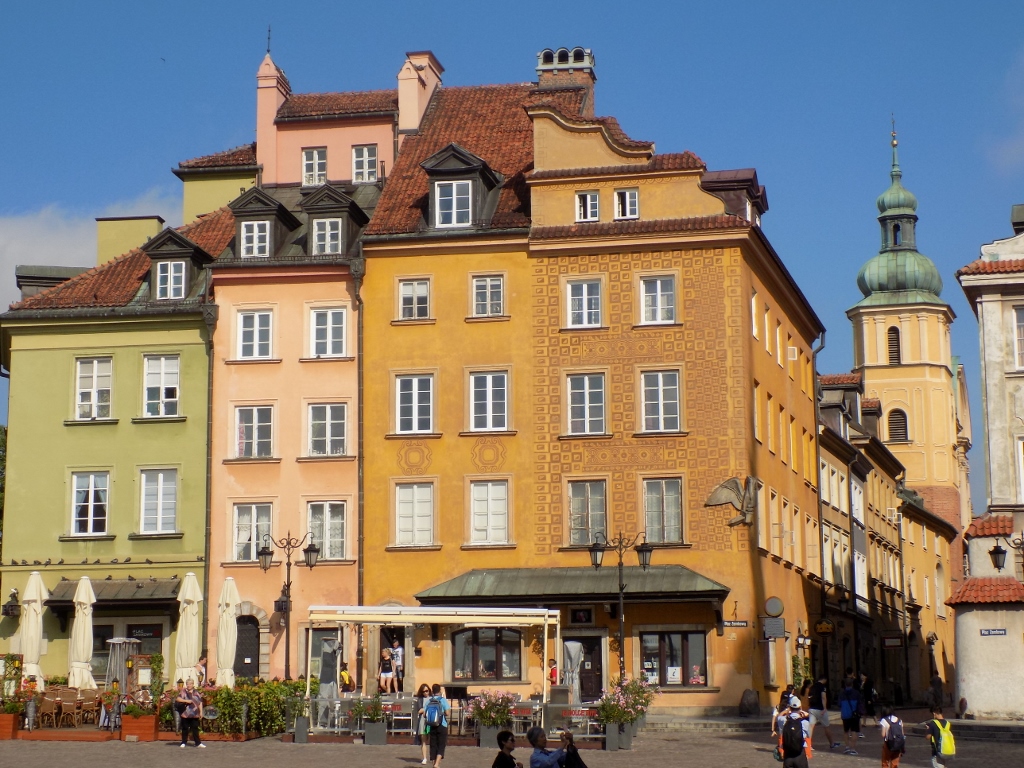 A detail from the Plac Zamkowy
A detail from the Plac Zamkowy
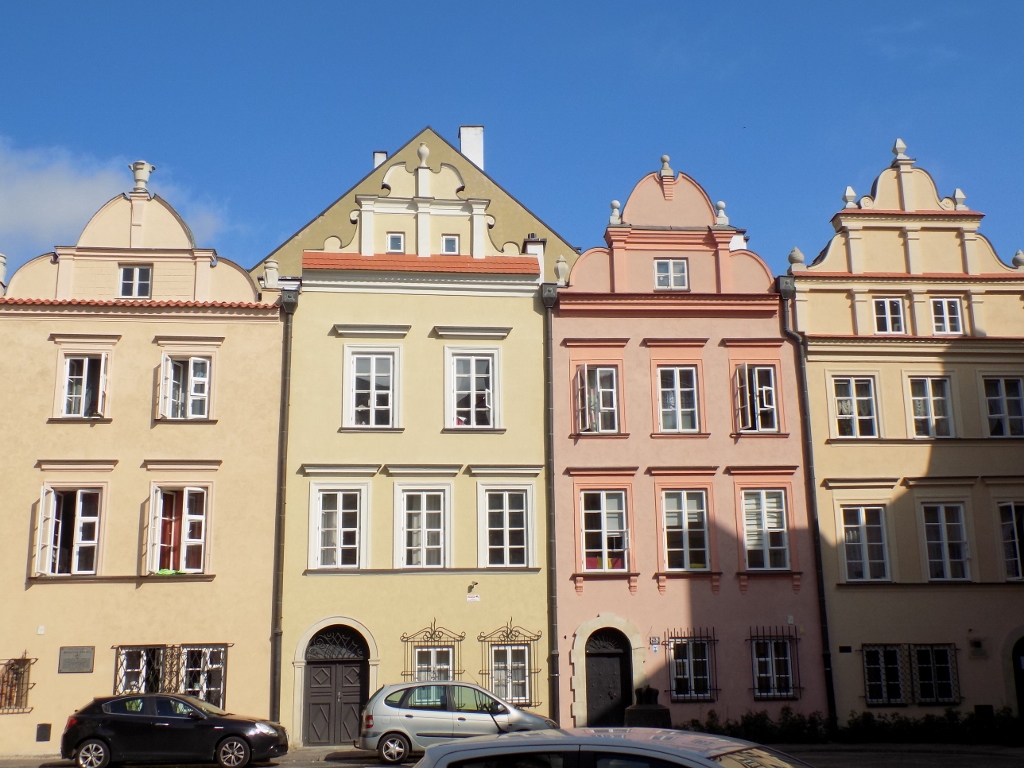 Seemingly same and yet, quite different
Seemingly same and yet, quite different
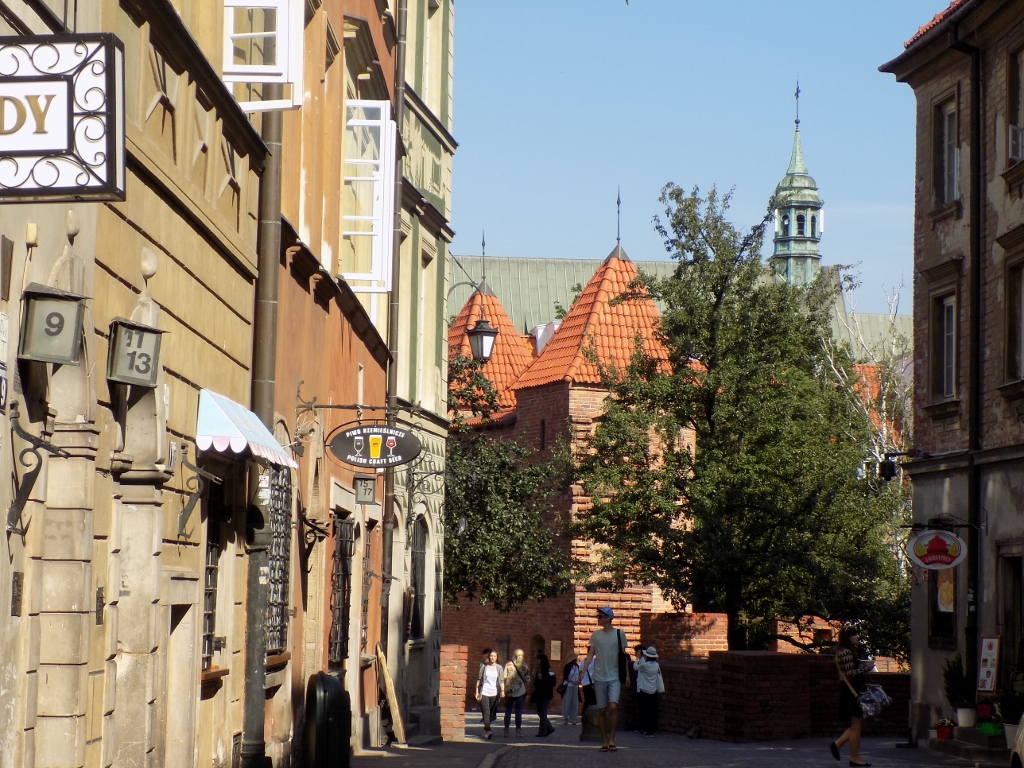 A detail from the Old Town
A detail from the Old Town
Still, my main plan for the morning was to go to a completely opposite side. Namely, I had already in Belgrade bought a ticket to the Warsaw Rising Museum and booked the time slot when I could be admitted, which meant my time that morning was limited. So, I left the Old Town on time, for I first wanted to go the Saxon Gardens, a park at an end of which is the Tomb of the Unknown Soldier. In front of the memorial, there is a huge plateau and I slowly went across it towards the monument by which there was a group of tourists. As I was approaching, they were all looking in my direction and although it did occur to me for a short while that I had grown horns on my head in the meantime, I did realize on time that they were actually looking at something that was behind me. If only a couple of people had gazed towards me, I would have been fine with it, but they ALL looked past me. It was clear that I should also look back to see what it was. It was actually three soldiers who were marching towards the memorial and I realized that I was in the middle of the path of the changing of the guard, so I moved away. Perhaps, I would have heard them, had there not been all the time some loud hissing noise that was coming from the nearby street works. Be as it may, when the changing was over, I took a few photos and moved on into the park.
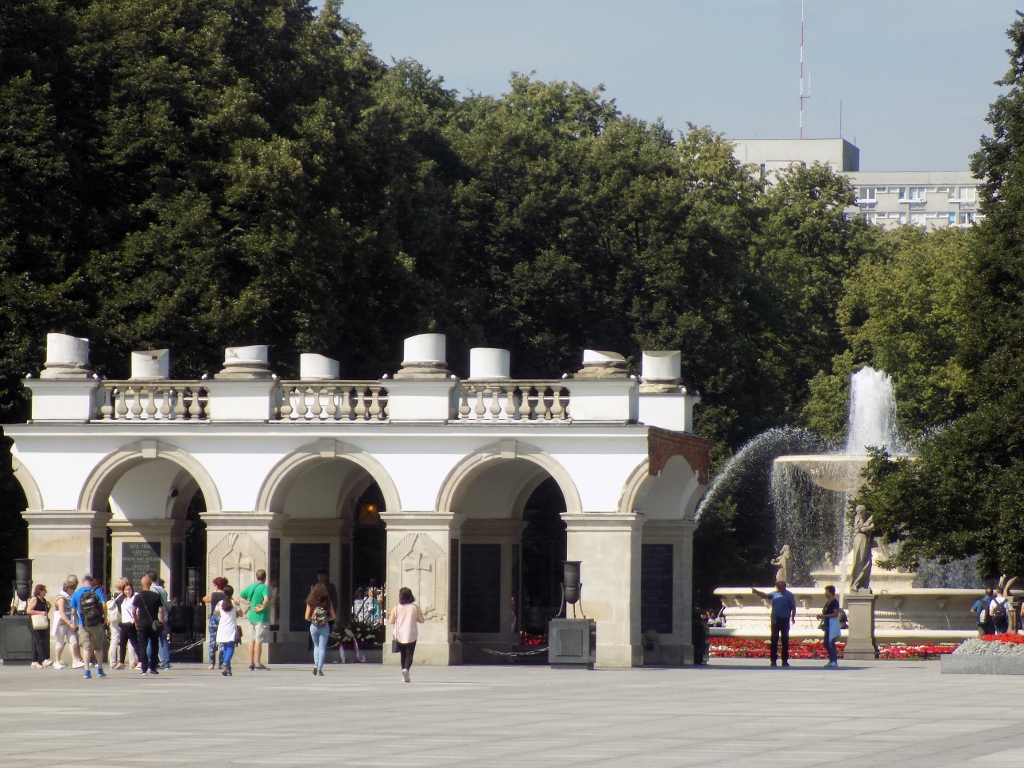 Tomb of the Unknown Soldier with the Saxon Gardens in the back
Tomb of the Unknown Soldier with the Saxon Gardens in the back
The Saxon Gardens is a relatively small, but very pretty park. In its central part there is a section with different flowers, while wonderful huge trees growing on the side provide a beautiful shade.
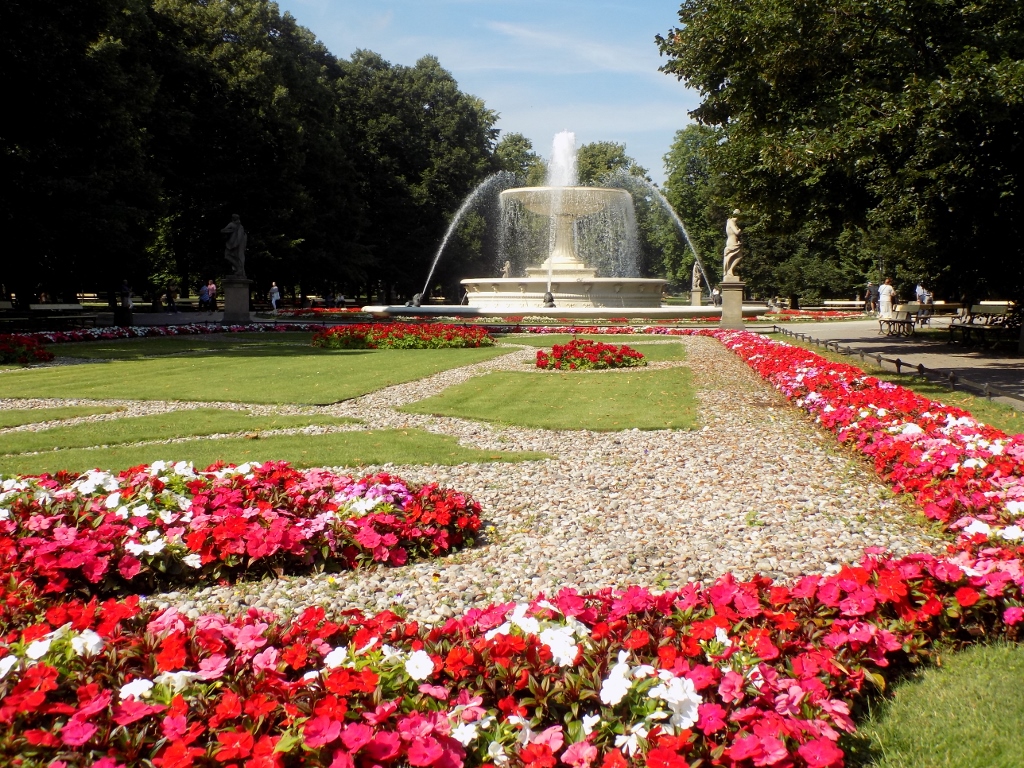 Saxon Gardens
Saxon Gardens
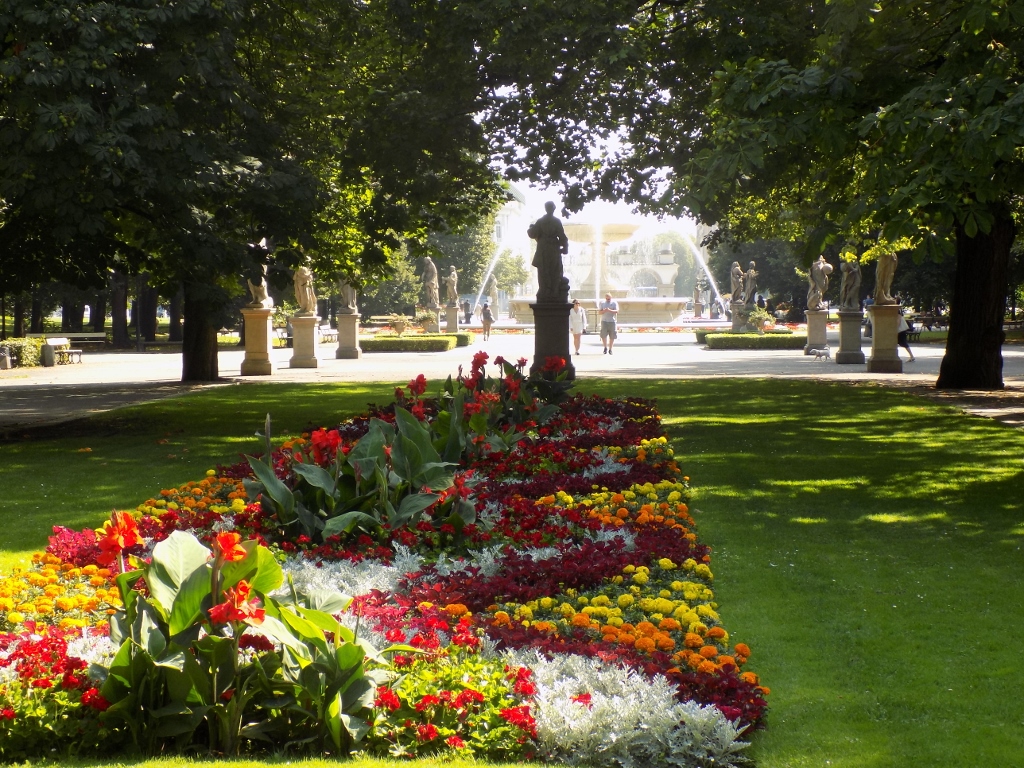 Saxon Gardens
Saxon Gardens
Going along this central section, I reached the end of the park and then I headed along Krolewska street. I just love walking around the places I visit. These streets here led through a part of the city which obviously hosted the business life of Warsaw, for there were numerous modern buildings and high-rises all in glass. The construction glass industry had obviously been very busy. And yet, in between those modern edifices intended, I presume, primarily for business, there were also new residential buildings, as well as some old ones. When I say old, I mean both those built after WWII and those built in the period which preceded it.
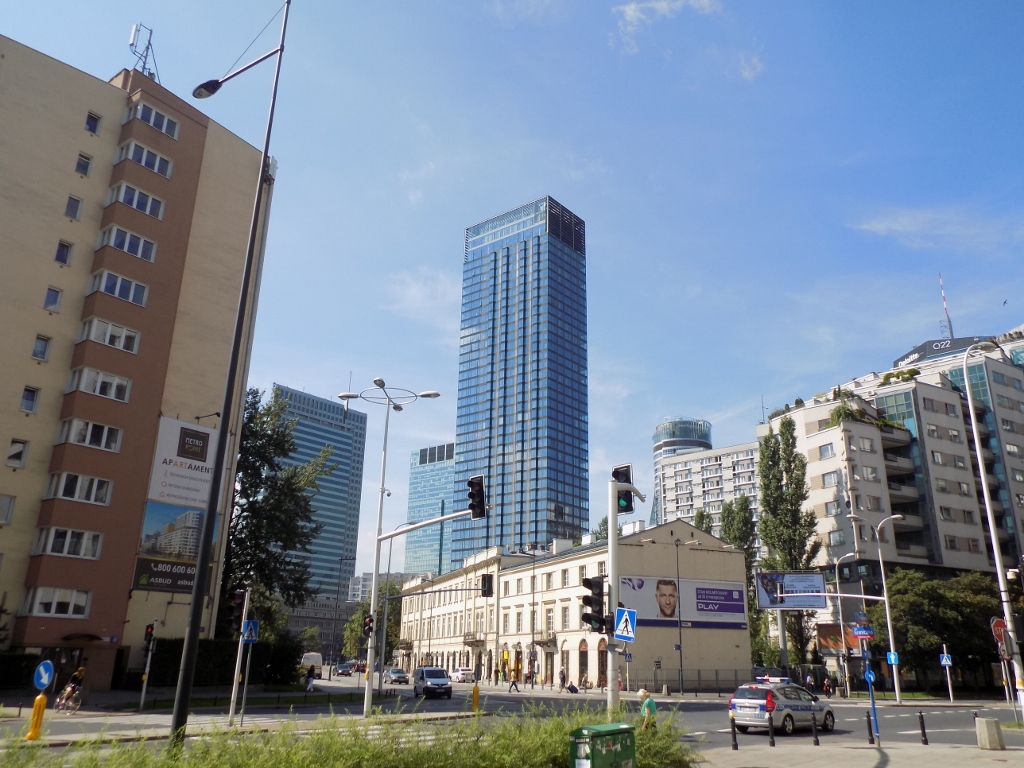 Buildings from different eras
Buildings from different eras
And so I came to the Warsaw Rising Museum. The museum is located in a group of buildings that in the past used to serve as a tram power plant. It is dedicated to an uprising which the Polish patriots in the country led against the German occupation in 1944. The exhibit is very well thought through and this is certainly a place that deserves a visit. Before coming to this museum which was opened in 2004, marking the 60th anniversary of the uprising, I had not known fully about the problems which the Poles had after WWII. I knew about some, but not those specifically linked to their fight against the Germans. Their suffering during the war had already been known to me – I remember from my history lessons that after the Soviet Union, the country that lost most of its population in WWII was Poland. In the third position of this horrifying list was Yugoslavia.
Namely, they were practically forbidden from marking and respecting the Uprising they initiated in 1944 which had cost them dearly not only in terms of a huge number of victims, but it had also been the immediate cause for the Old Town, together with the Royal Castle, to be destroyed to the ground. The historic “problem” of Poland lies in the fact that it is positioned between a rock and a hard place, Prussia and Russia, that is, Germany and the Soviet Union. One of them goes a little bit one way, then the other pushes back, then they all sit down and somehow decide on the fate of the country. In the second half of the 18th century, in three stages, Prussia, Austria and Russia managed to split Poland between the three of them and the country simply ceased practically to exist until the end of WWI. It was perhaps this continuous peril and the real problems that had led the Poles to be so aware of their nation and to manage to preserve their nation throughout the history.
Nowadays, it is frequent in the popular culture (read, the American films), as well as in the comments I sometimes come across when in the UK, that Poles are depicted as poorly educated people who do either domestic or manual jobs that require almost no education. These are, of course, stereotypes. I’m not saying that there are no Poles who do these types of jobs abroad, but you can find people who do these jobs in any nation and there is certainly nothing wrong with that – people earn their living through honest work. Still, few nations in the world can boast a Copernicus, Maria Sklodowska-Curie, Sienkiewicz, Chopin and a large number of other Poles who have left a deep mark on the history of the human civilization.
After my visit to the Warsaw Rising Museum, I continued walking around this part of the city, but with a clear destination in my mind which was also linked to WWII. This time it was Zlota Street, number 62. Namely, it is at this address that remains of the wall which used to encircle the Jewish Ghetto during the war may be found. In autumn 1940, the Germans enclosed Jews into this ghetto by building a high wall around one part of the city in which horrible living conditions prevailed. From there, Germans regularly deported Jews to concentration camps, while a large number of people died in the ghetto itself from hunger and diseases. Then, in spring 1943, a comparatively small number of them who were still alive started an uprising, but the Germans eventually managed to crush it and then they killed all the residents of the ghetto, while also razing this part of the city to the ground.
Still, a few sections of the wall that ran around the Ghetto have kept until today and they may be seen at this address. When one approaches the site, there is nothing that suggests what lies behind this inconspicuous place. One needs to enter between some shops and there is a path leading into an inner yard, for there are also other residential buildings inside and it all seems very quiet, complacent and harmonious. Still, there are also signs showing the way and the remains of the wall may be seen in two places. One should not expect much, seemingly a wall like any other, and yet, the symbolism it represents is powerful.
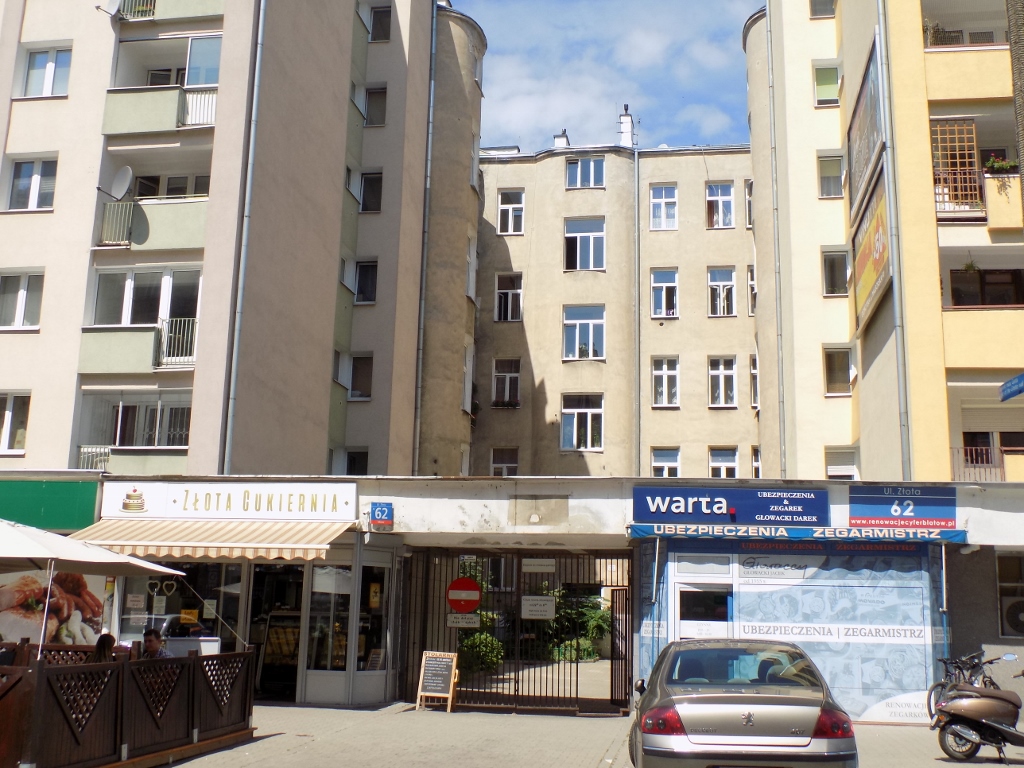 The inconspicuous entrance at Zlota Street no. 62
The inconspicuous entrance at Zlota Street no. 62
After this, I headed in the direction of the Palace of Culture and Science. The building was constructed in 1955 and the most frequent comment I had come across was that it had been built by Stalin in order to make an impression. I do apologize, but huge buildings are always made in order to make an impression on the others, right? Or, perhaps because it is cheaper that way – better degree of utilization of the construction land. The other frequent comment I had heard was that it appeared inharmonious and tasteless in comparison to the surrounding buildings. I do have to make a comment myself here as well: if the building had been built in the West and if it had been built at the orders of some other person, I’m sure nobody would have commented its looks in this way. After all, just have a look at some buildings in New York (for instance, the Eldorado building next to the Central Park). Nowadays, such buildings are no longer constructed, but rather the glass and simple lines are the choice followed when designing them. What I want to say is that the final appearance of a building is a question of style and the historical epoch. All else is politics and propaganda.
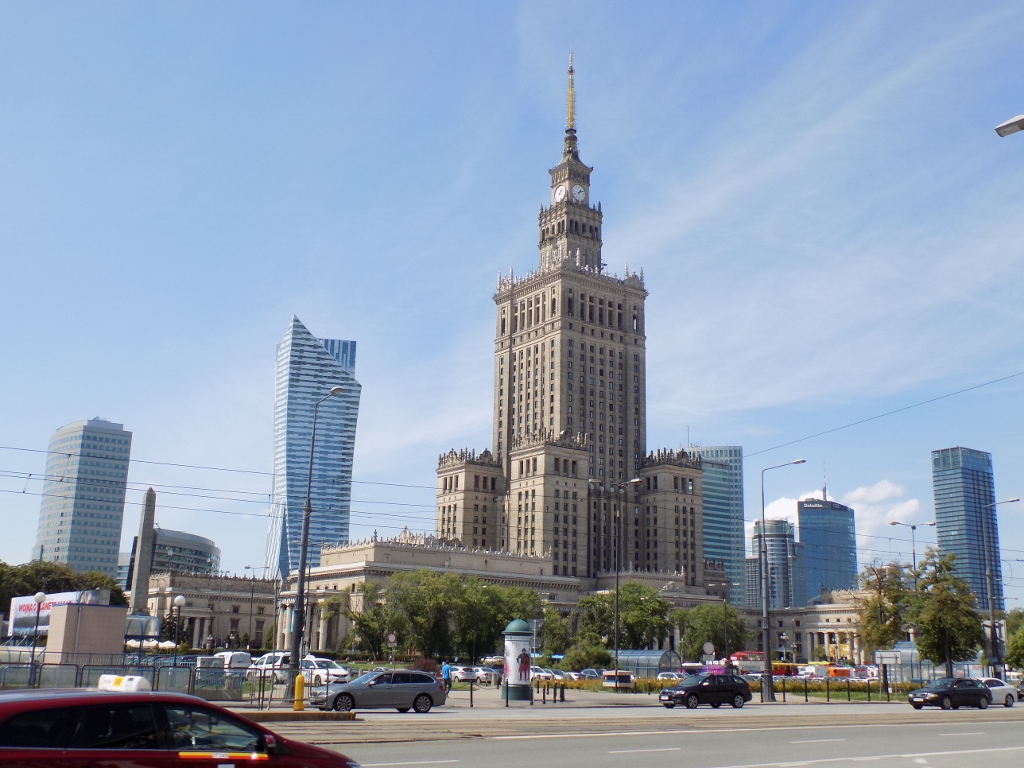 Palace of Culture and Science
Palace of Culture and Science
I like it though that the building is called the Palace of Culture and Science. And not only that it is called like that, but it does contain a couple of museums, theatres, cinemas, bookstores, etc. I even find this to be an advantage in comparison to some of the nearby edifices, such as big shopping malls, which are in fact unofficial “palaces of commerce and basic instincts.”
Although it is possible to take an elevator and go to the top of the Palace of Culture and Science, or rather to its 30th floor to be more precise, in order to enjoy a panoramic view at the city, I didn’t do this, opting instead to go for a great light lunch which first seemed to be a small quantity of food, but eventually turned out to be just perfect. I enjoyed both while eating it and later, for it kept me full quite well and long enough.
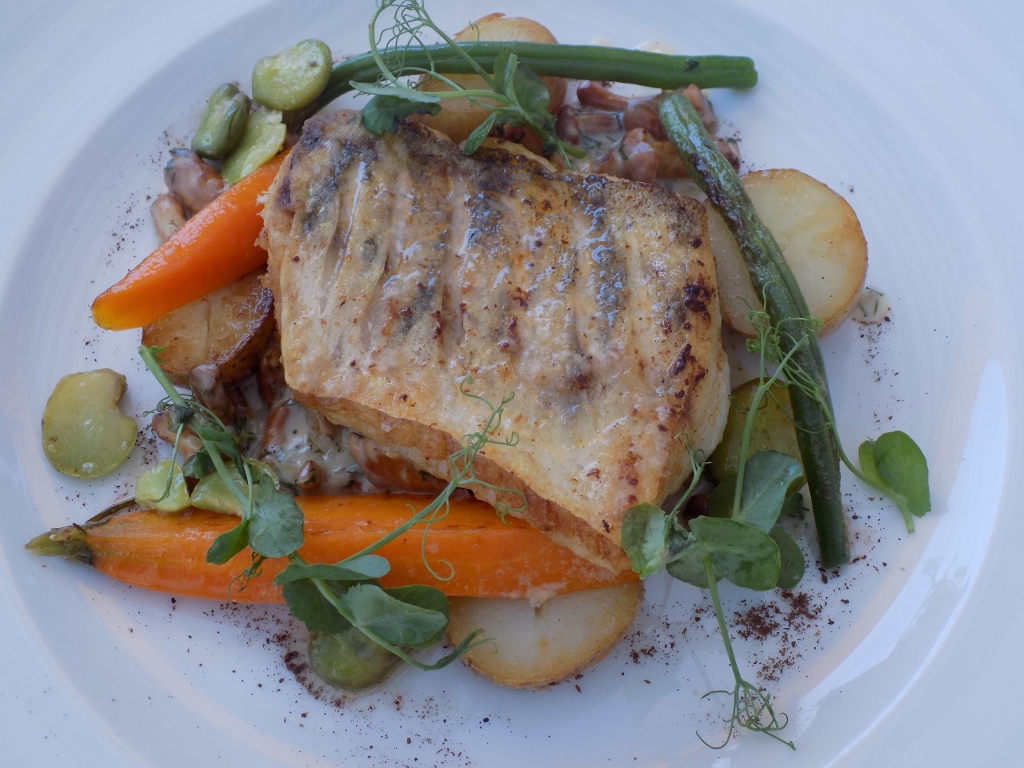 Grilled fish for lunch
Grilled fish for lunch
After the lunch break, I took a bus to go to the Wilanow Palace which is situated at the end of the Royal Route.
The palace was built at the end of the 17th century and it has managed to survive all the misfortunes and devastations through which Poland has passed in the meantime. Nowadays, it is a very pretty museum with a wonderful, large park. It takes about 2 to 3 leisurely hours to see it all.
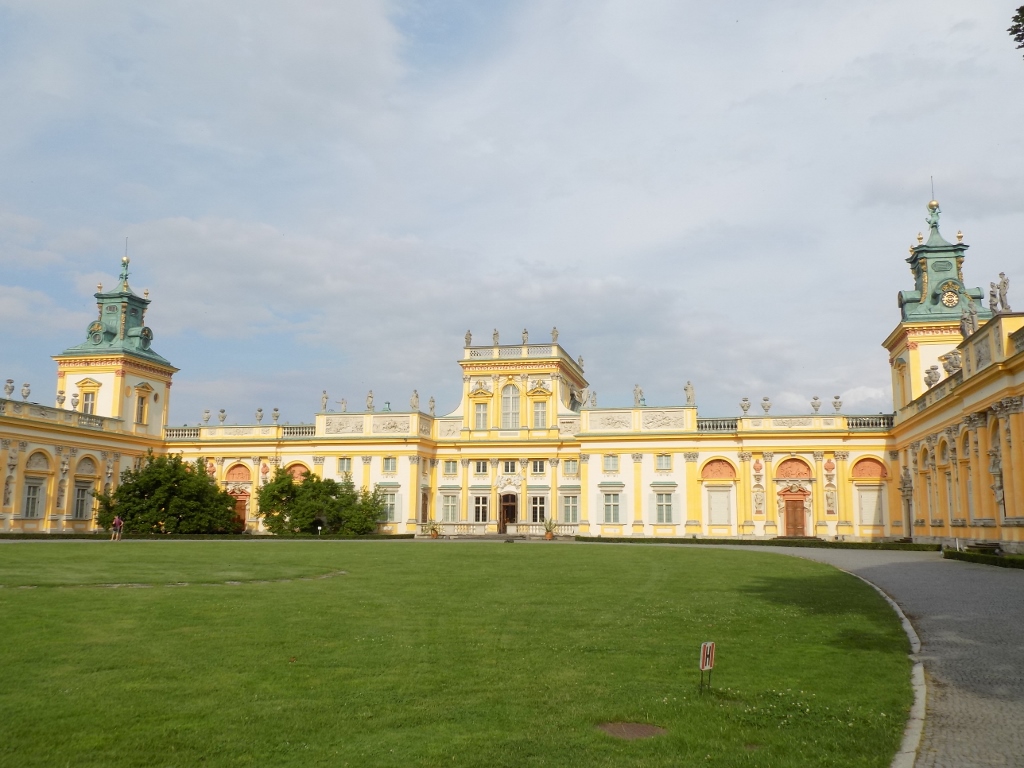 Wilanow Palace
Wilanow Palace
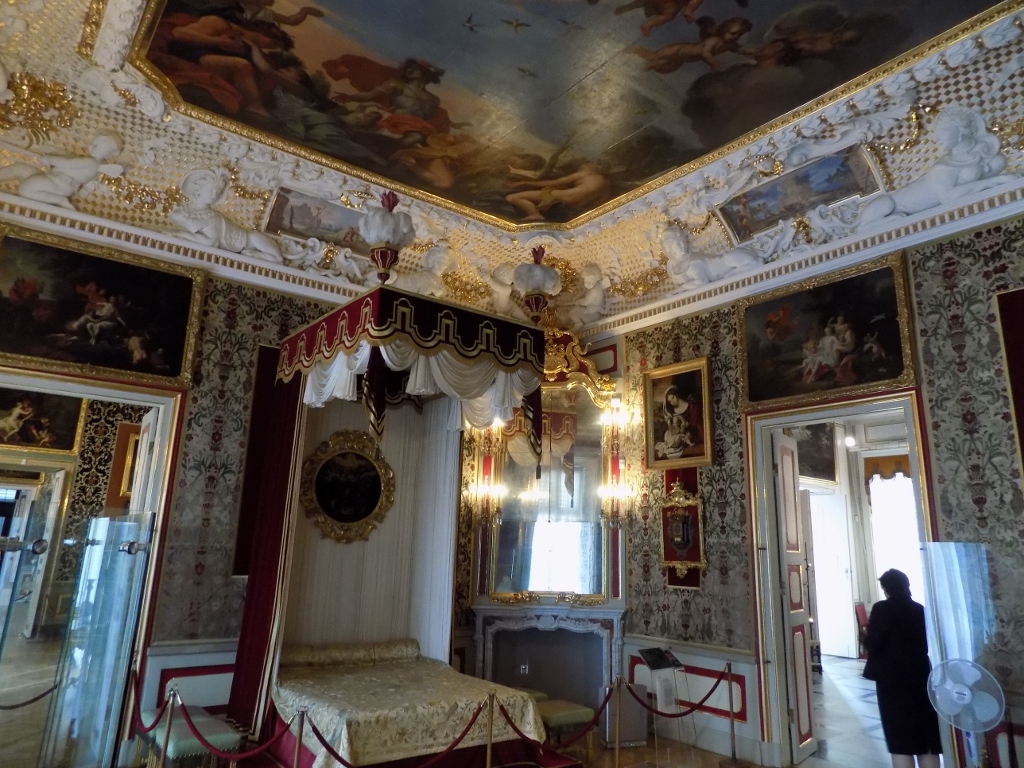 Wilanow Palace, a detail – queen’s bedroom
Wilanow Palace, a detail – queen’s bedroom
Having visited the palace, I went to the park and there I particularly enjoyed playing with my photo camera. The park actually consists of a garden section which is better organized, with flowerbeds and fountains, but there is also a section that seems a little wilder. It all comes out to a lake and it is also possible to visit an islet that belongs to the park.
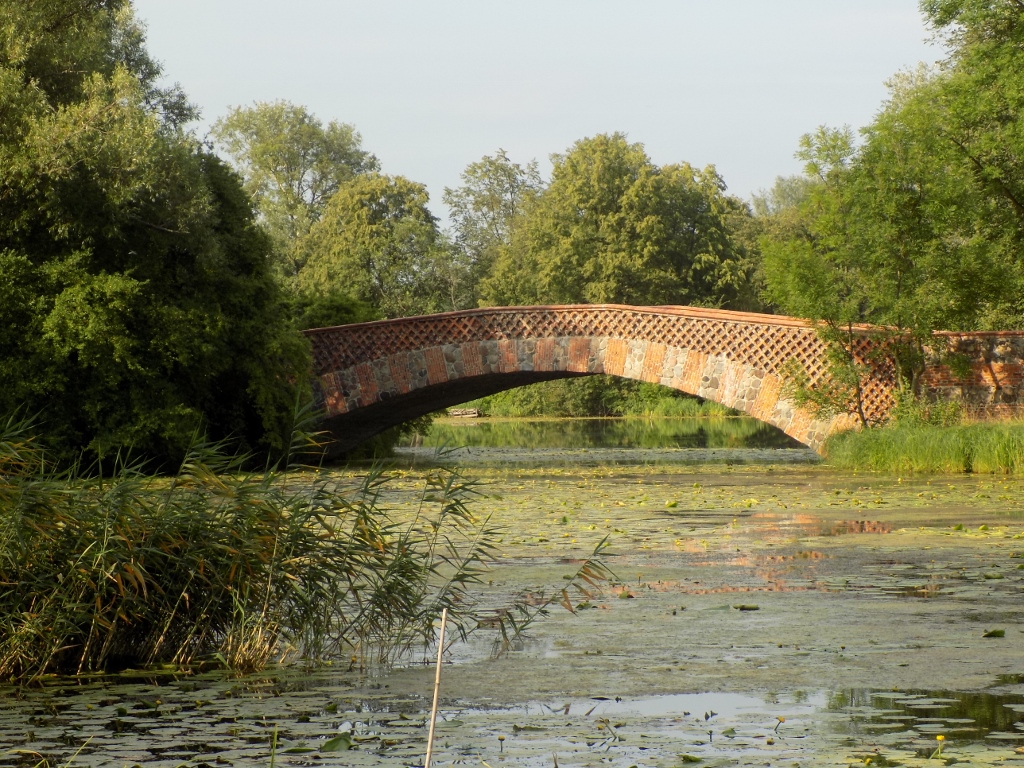 Wilanow Palace, park, a detail
Wilanow Palace, park, a detail
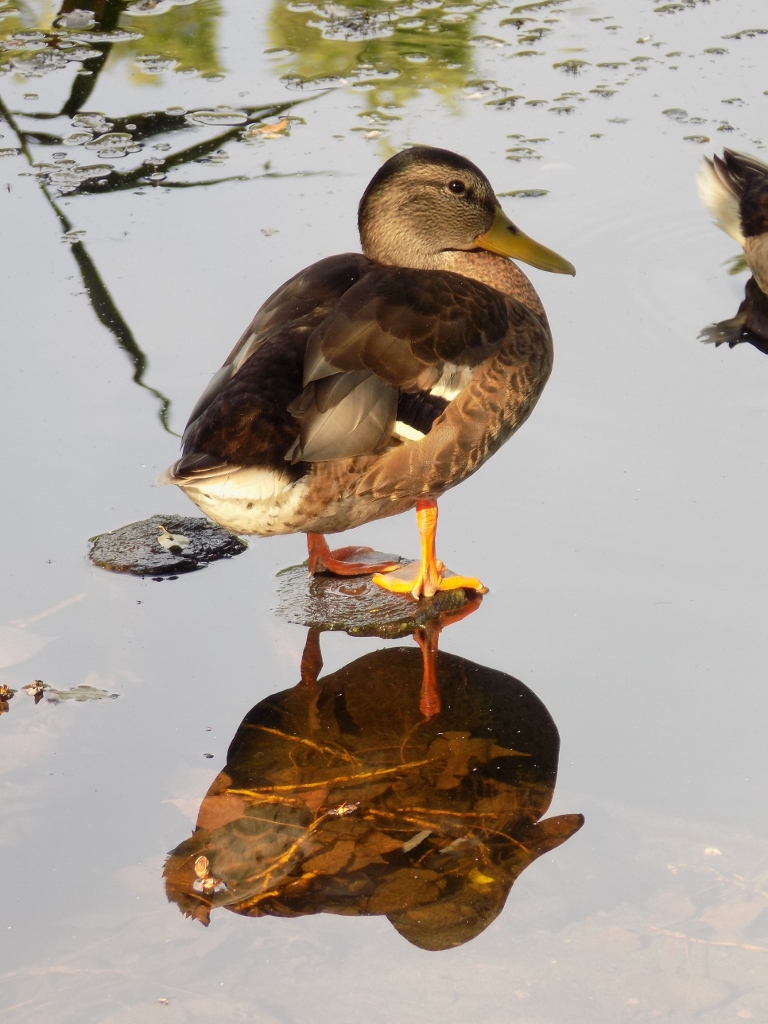 Wilanow Palace, park, a detail
Wilanow Palace, park, a detail
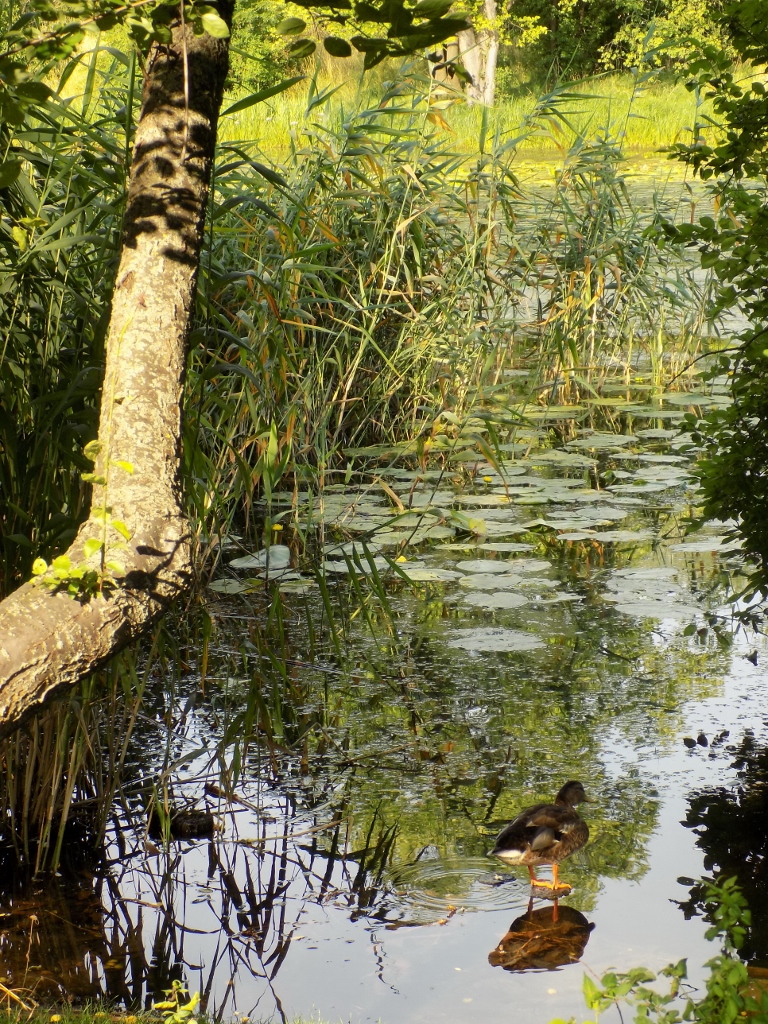 Wilanow Palace, park, a detail
Wilanow Palace, park, a detail
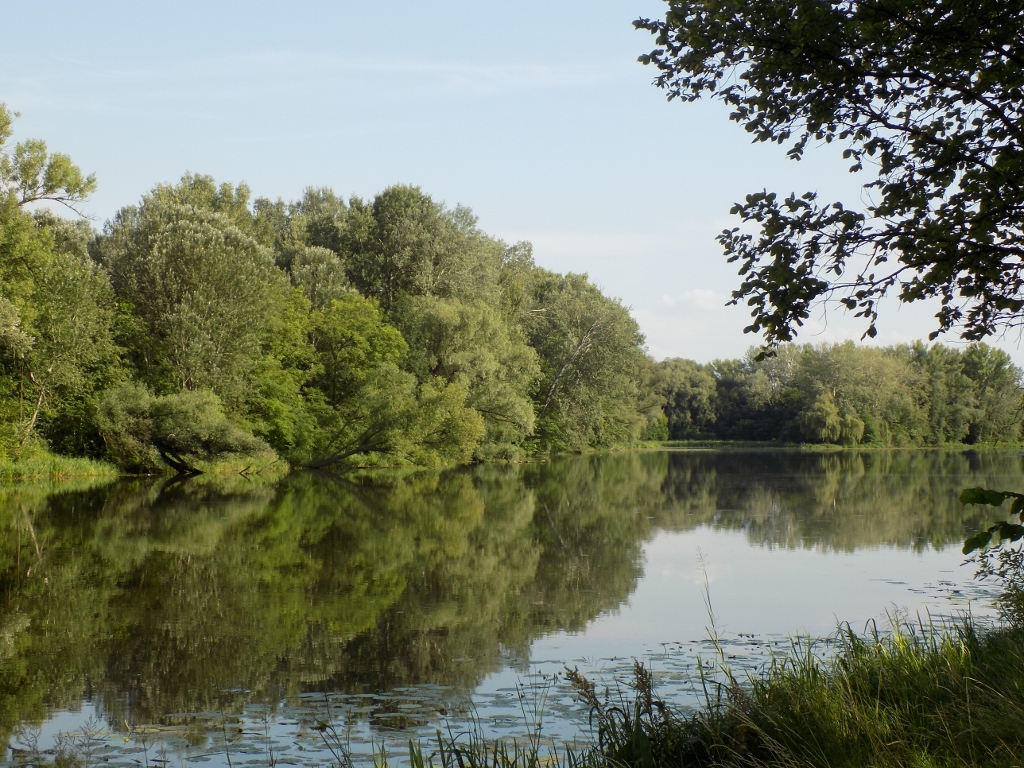 Wilanow Palace, park, a detail
Wilanow Palace, park, a detail
After that I went to the Lazienki Park with an intention to find the palace which I had not managed to visit the day before on account of the heavy rain. Still, I first passed by the Chopin’s monument to say hello. This time around, it was quite alone.
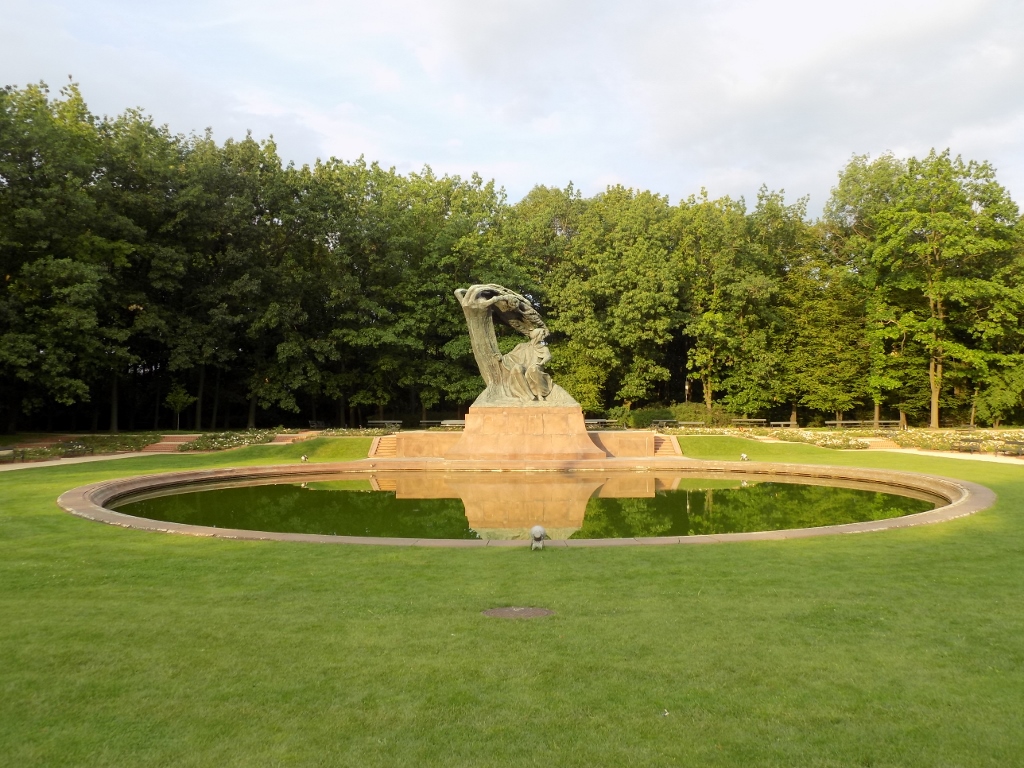 Lazienki Park, monument to Chopin
Lazienki Park, monument to Chopin
The palace I wanted to see was the Palace on the Isle or the Lazienki Palace. I found it and it is truly beautiful. By that time, however, the sun was already close to setting, so there was less light, but I was nonetheless very content with what I saw. By the way, this is the biggest park in Warsaw, so it does take time to visit it thoroughly.
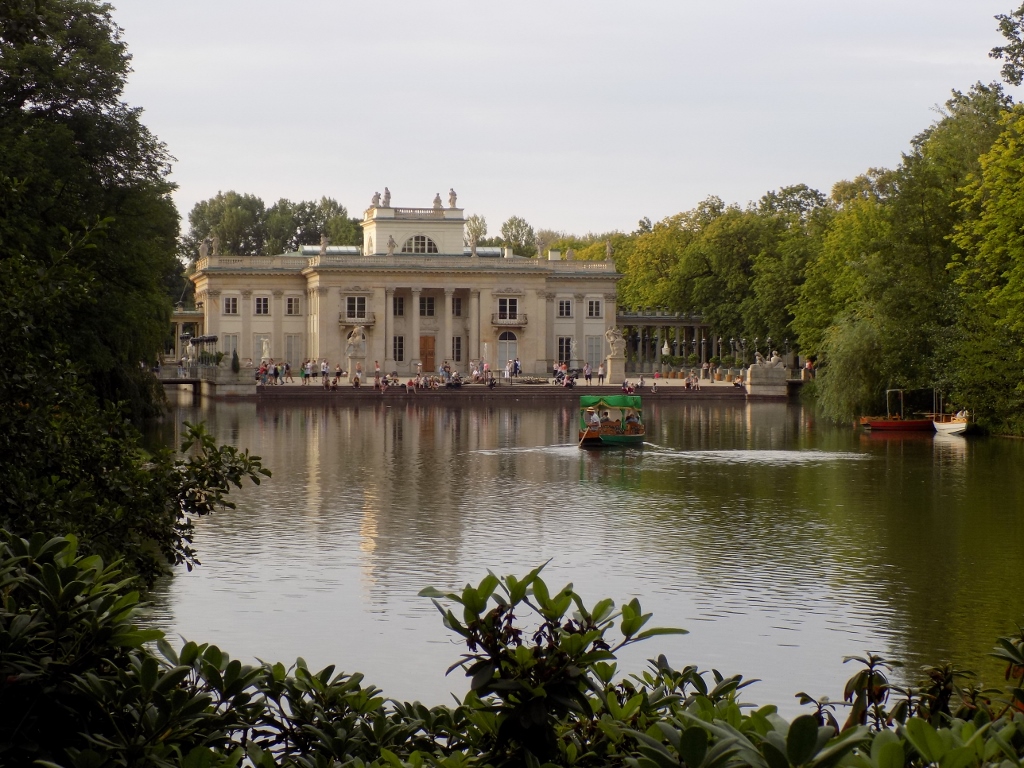 Lazienki Palace
Lazienki Palace
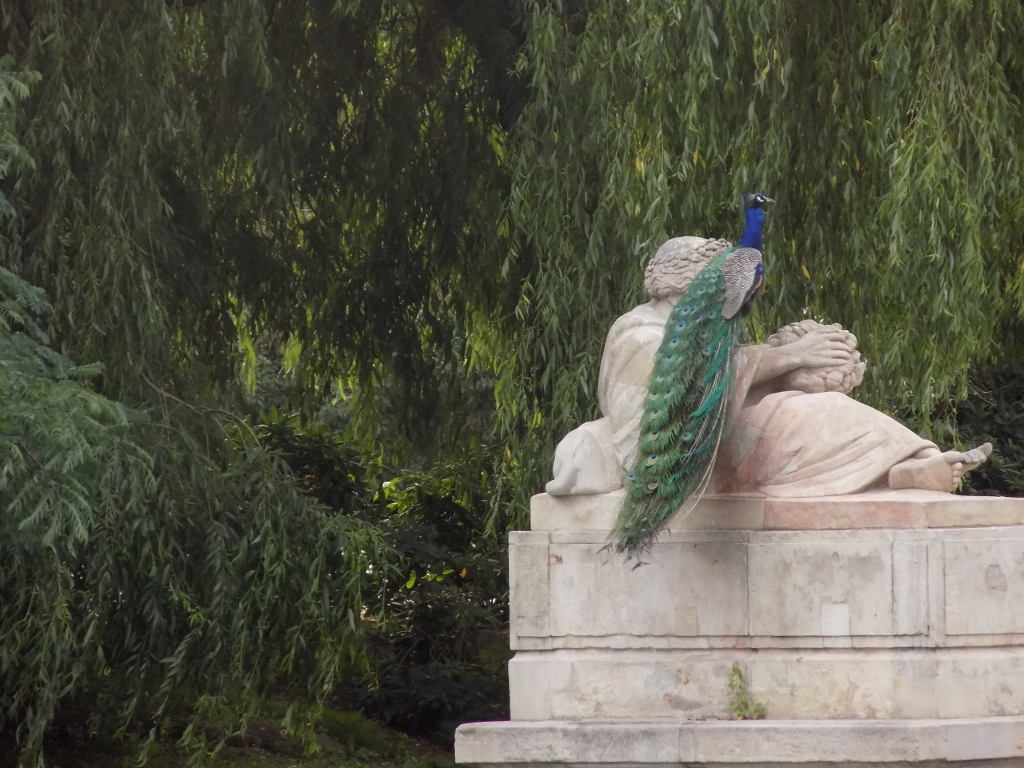 Lazienki Palace, a detail
Lazienki Palace, a detail
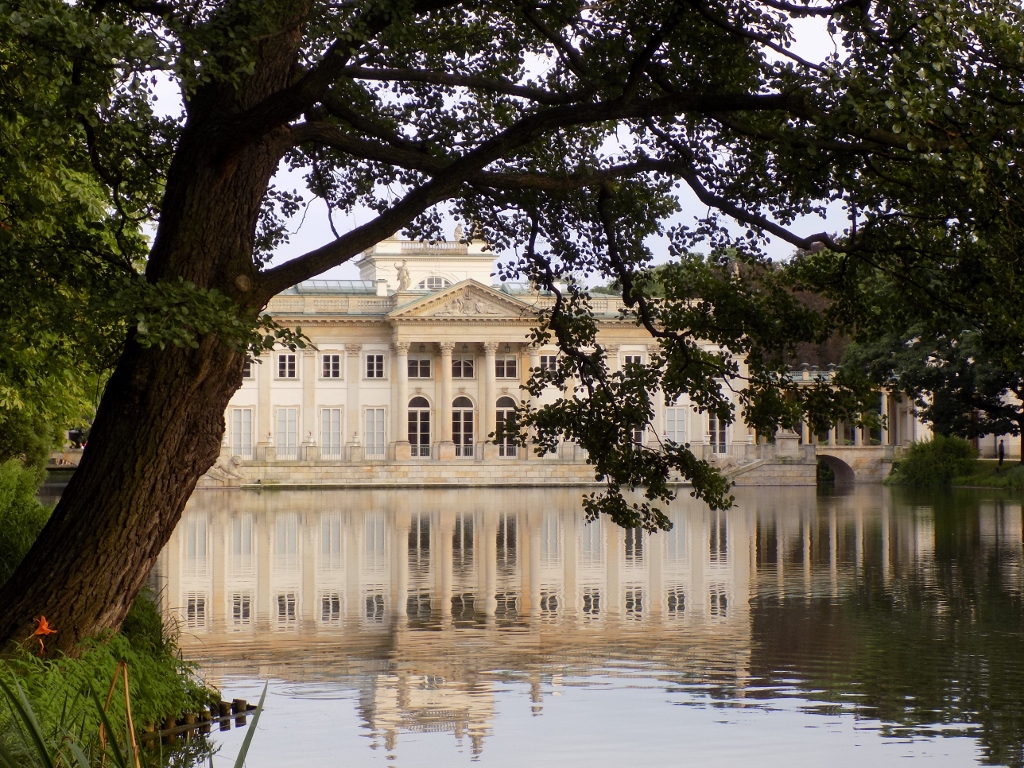 Lazienki Palace
Lazienki Palace
After walking around the Lazienki Palace I was just too tired to go anywhere else, so I took the bus to return to the centre where I had the flat rented. The bus passed through streets that were full of cafés with tables on the sidewalks, as well as different shops – from wardrobe shops to a Ferrari shop. Hmm? Maybe I could have gone shopping? ... Well, perhaps next time.